Introduction
Leica is arguably best known as a manufacturer of rangefinder cameras, and the design and layout of the Leica Q takes its cue from the Leica M series. Although the Leica Q shuns the rangefinder mechanism for focusing, like its sibling the Leica M, it is a full-frame model with a new 24-Mpix CMOS sensor sans AA filter and a fixed 28mm f1.7 ASPH lens. Developed specifically for the Leica Q, the f1.7 Summilux lens features both aperture and focus rings and focuses to just 17cm in macro mode.
With no rangefinder or optical viewfinder, the Leica Q features an EVF instead. But it’s no ordinary finder: with a 3.68m-dot resolution, the Leica Q boasts the current highest-resolution electronic viewfinder available. And to the rear, it features a 3-inch touchscreen LCD with 1.04m-dot resolution. In addition, the Leica Q adopts a Maestro II class processor (previously found on the Leica S) that delivers sensitivity up to ISO 50000, continuous shooting to 10 fps, and 1080/60p video recording. The Leica Q measures 5.1 x 3.1 x 3.7” / 130 x 88 x 93mm and weighs 22.58 oz / 640g, body only.
Measurements: Excellent low-light score
The new Leica Q achieved an overall DxOMark score of 85 points that comprises an excellent score of 24.3 bits for color sensitivity, a slightly lower-than-expected 12.7 EVs dynamic range at base ISO, and a good low-light ISO score of 2221 ISO. It is the best low-light, high-ISO performance of any Leica to date, albeit only a slight improvement over the full-frame Leica M.
Leica Q Typ 116 vs Leica M Typ 240 vs Leica M9 P: Impressive High-ISO DR
Although the Leica Q’s DxOMark score of 85 is very good, it is only just above the Leica M at 84 points, so the overall performance of the two are on a similar level. But if we look at the data in detail, there are some interesting differences. And it comes as little surprise to see that the CMOS sensor dynamics of both models are well above the still highly-regarded CCD-based Leica M9-P (and M9). With a lower base ISO of ISO100 (against the ISO200 of the Leica M), the Leica Q has a little extended color sensitivity, but it is essentially the same through ISO400, where the lower noise means there’s a marginal improvement at higher ISOs.
The M9 has lower color depth at base (ISO80, but measured at 143), but surprisingly it’s not far behind either the M or Q from ISO400 through ISO1600. It drops precipitously at ISO2500, however. Dynamic range on the Leica Q is behind the M at base. But even taking the difference into account, the Leica Q has far superior dynamic range from ISO400 onwards, and as a result is more flexible in recovering shadow detail or simply dealing with exposure adjustments generally. As for low-light sensitivity, the Leica Q trounces the Leica M9-P by around a +1.3 stops, but overall, it’s only a +0.25 stop improvement, or thereabouts, over the Leica M.
Leica Q Typ 116 vs Sony Cyber-shot DSC-RX1R vs Sony A7R II: Strong performance
There aren’t many high-end full-frame rangefinder style models to compare with, but the 24-Mpix Sony RX1R model is arguably the closest rival. We’ve also compared the Leica Q with the Sony A7R II — not that it is considered a direct rival, but more that it’s presumed to have the same sensor as the new RX1R II. In this company the Leica Q struggles a little, but it’s not far behind the performance of the RX1R, though Sony has achieved some significant gains with the sensor in the A7R II. At lower ISOs, color sensitivity is marginally behind the RX1R, but that changes at ISO1600, where the Leica Q has a slight advantage. Against the A7R II, however, it’s clear that the new Sony sensor has substantially lower noise and improved color depth at all ISOs settings.
Both Sony models have a stop or so extra dynamic range at base, but that advantage is soon eroded and lost by ISO800, where the Leica Q overtakes the RX1R and even comes close to the A7R II. However, an additional boost in sensor dynamics at ISO1600 in the A7R II improves the dynamic range to around a stop over the Leica Q up through the maximum ISO setting. Following a pattern similar to the results for color depth and dynamic range, noise levels are close between the Leica Q and RX1R, with the latter having around a +0.3-stop advantage, but the Leica Q trails the newer A7R II by nearly a stop.
Conclusion
The Leica Q is a thoroughly modern and likable camera with a very impressive sensor. While it is close in performance to the CMOS in the Leica M, it is clearly a different sensor with slightly lower noise and improved high-ISO dynamic range. While that has implications for the dynamic range at base ISO, it remains competitive and offers excellent, nuanced color and low noise. If the field of view of the fixed 28mm focal length lens appeals, then anyone who likes working with the Leica M series will surely be tempted by the performance of this new model.


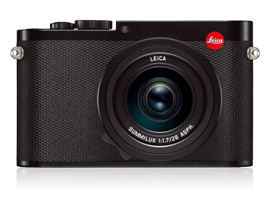



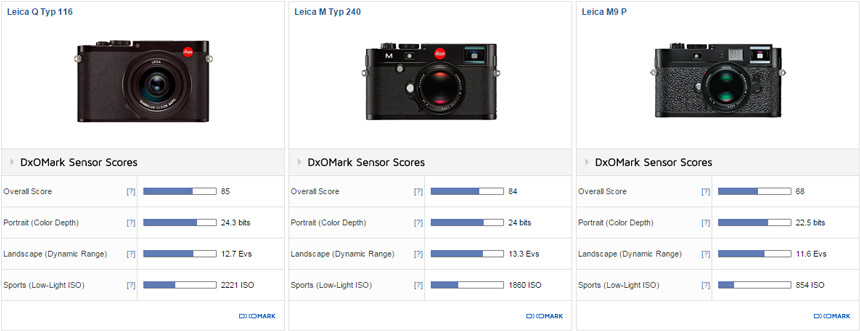
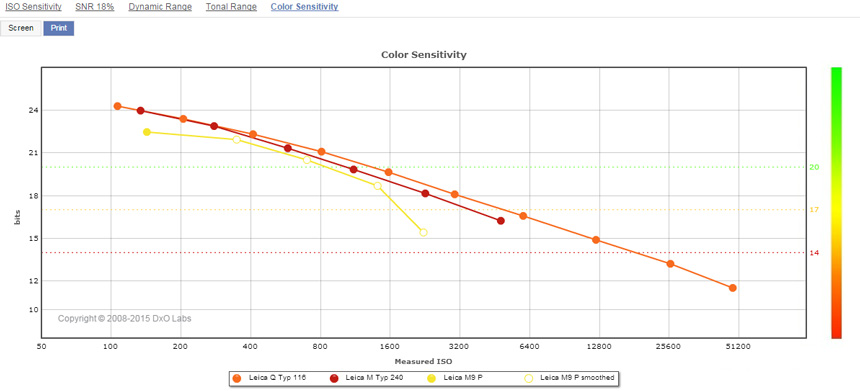
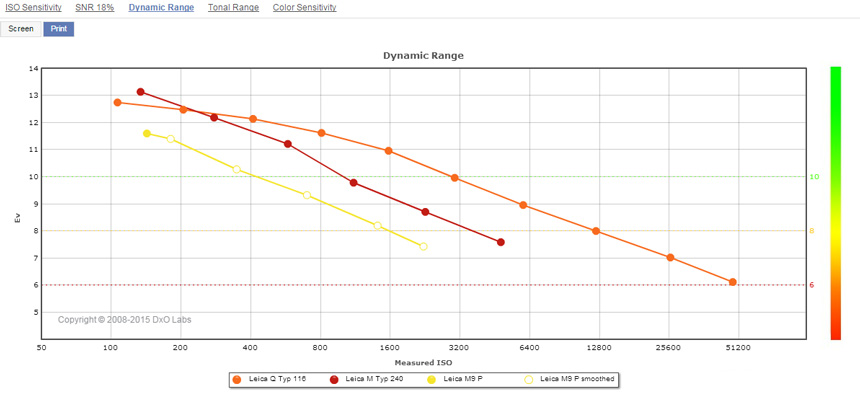
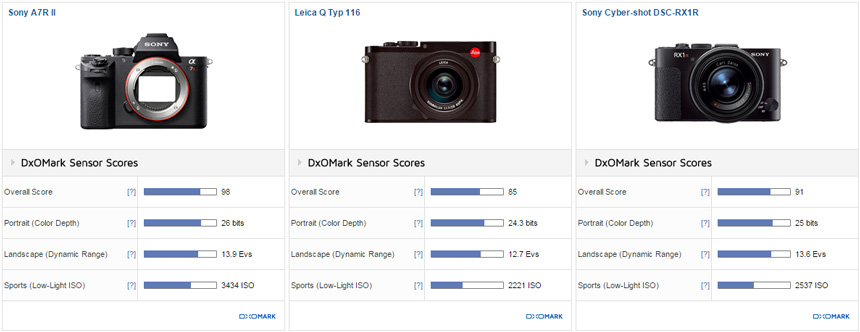
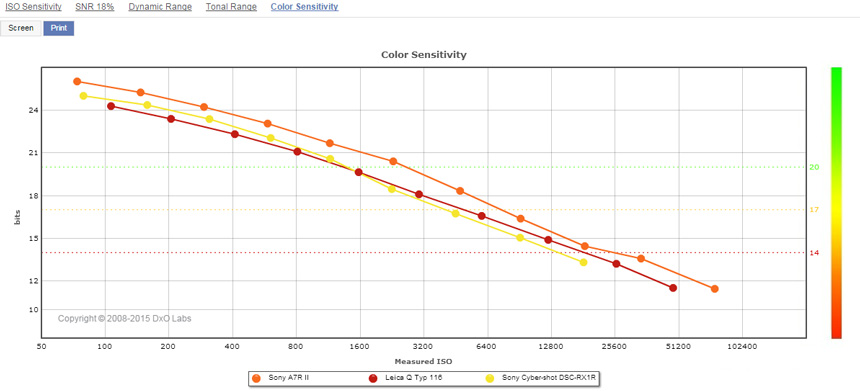
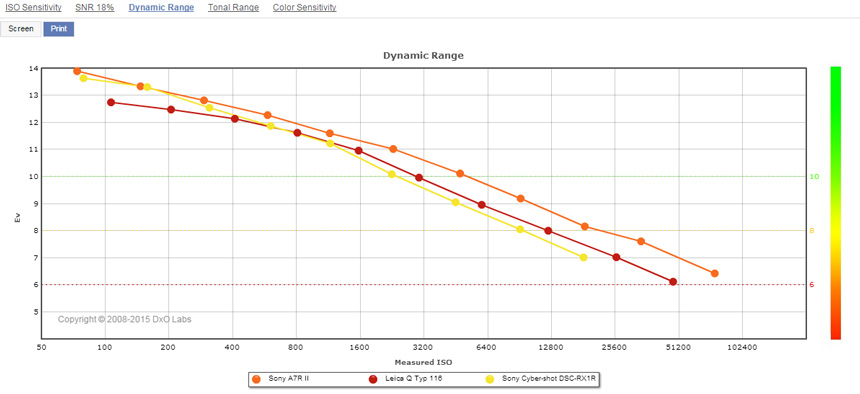
DXOMARK encourages its readers to share comments on the articles. To read or post comments, Disqus cookies are required. Change your Cookies Preferences and read more about our Comment Policy.